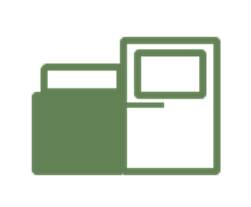Background & Rationale
Understanding how enhancers control gene expression in vivo remains a key challenge in epigenetics. Traditional methods infer enhancer activity via histone modifications or chromatin accessibility, yet enhancer RNAs (eRNAs)—rapidly transcribed, bidirectional RNAs—provide direct evidence of active enhancers. This study applied GRO-seq to wild-type and HDAC3 knockout mouse livers to identify active enhancer elements and how HDAC3 influences enhancer-driven gene regulation.
Core Analytical Dimensions and Technical Findings
- Nascent Transcript Profiling: GRO-seq captured genome-wide transcription of both coding genes and eRNAs.
- Enhancer Activity Quantification: Identified thousands of eRNAs showing increased transcription upon HDAC3 deletion.
- Integrated Multi-omics: Combining GRO-seq with ChIP-seq enabled linking enhancer activity, transcription factor binding, and target gene expression.
- Functional Annotation: The study performed a functional enrichment analysis, revealing eRNAs linked to lipid metabolism and liver-specific gene networks.
 Summary of features distinguishing NRSA from exiting GRO/PRO-seq analysis tools.
Summary of features distinguishing NRSA from exiting GRO/PRO-seq analysis tools.
Interpretation and Industry Relevance
This research demonstrates GRO-seq's unique strength for directly measuring enhancer activity in complex tissues under physiologically relevant conditions. Unlike histone-mark-based inference, GRO-seq reports functional output—transcription. By pairing with ChIP-seq and gene expression data, the study provides a comprehensive view of enhancer-mediated gene regulation, informing potential drug targets and therapeutic biomarkers related to liver physiology.
Strategic Takeaway
This BMC Genomics study highlights how GRO-seq:
- Enables direct detection of eRNAs, bypassing indirect epigenetic inference.
- Supports functional multi-omic integration, crucial for mechanistic insight.
- Is suitable for in vivo analyses, not just cell culture.
For researchers exploring enhancer dynamics—whether in disease, metabolism, or development—CD Genomics' GRO-seq service offers the precise resolution and analytical rigor required for advanced functional genomics and regulatory element validation.












